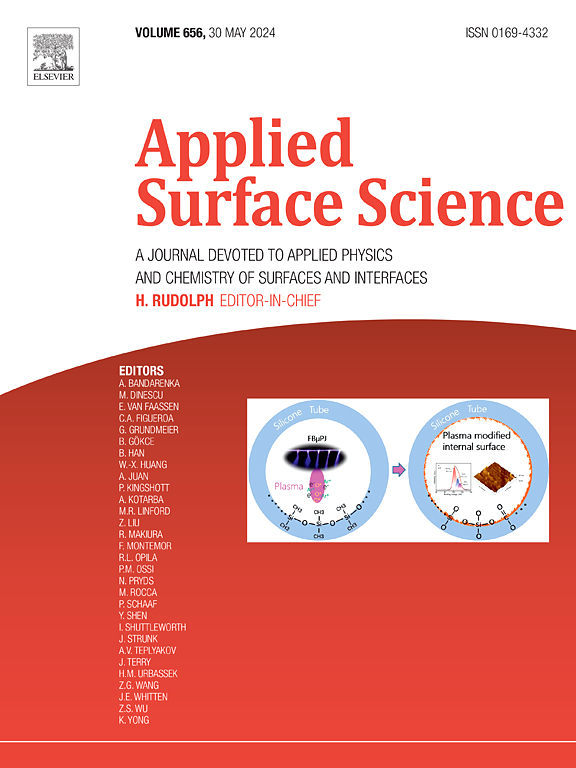用疏水纳米粒子和 HDMTS 对棉花进行共功能化,将其作为一种耐用、简单且不含氟的方法,用于憎水、易清洁和油水分离用途
IF 6.9
2区 材料科学
Q2 CHEMISTRY, PHYSICAL
引用次数: 0
摘要
棉花固有的亲水性限制了其在油水分离等特殊领域的应用。尽管已经做出了重大努力,赋予不同织物的表面超疏水特性,但大多数报道的方法依赖于对环境有害的氟化化合物。在本研究中,高疏水性是通过纳米材料与十六烷基三甲氧基硅烷(HDMTS)的组合产生微/纳米粗糙度来降低表面自由能来实现的。结果表明,纳米材料浸渍棉后再进行HDMTS处理,可使棉的水接触角接近150°,滑动角较小;在不同pH值和有机溶剂的溶液中,这种疏水性不会受到反复剥离胶带粘附循环、超声波或浸泡的影响。它们的疏水性使它们能够抵抗水性污渍,并且棉花固有的透气性不会因改性方法而受到损害。功能化棉具有明显的易清洗和油水分离特性,特别是疏水氧化铝纳米粒子改性后的功能化棉,经过20次循环后的分离效率达到98.9%。综上所述,将这些纳米材料与HDMTS结合在一起,有很大的潜力来制造高度疏水性和坚固的棉花。此外,我们可以很容易地将这种简单、环保的方法用于大规模生产。本文章由计算机程序翻译,如有差异,请以英文原文为准。


Co-functionalization of cotton with hydrophobic nanoparticles and HDMTS as a durable, simple and fluorine-free approach for water-repellent, easy-cleaning and oil–water separation applications
Cotton’s intrinsic hydrophilic nature poses a major limitation to its application in specialized fields such as oil/water separation. Although significant efforts have been made to impart the surface of different fabrics with superhydrophobic properties, most of the reported approaches rely on fluorinated-based compounds, which are harmful to the environment. In this study, high hydrophobicity was achieved through a combination of nanomaterials to create micro/nano roughness with Hexadecyltrimethoxysilane (HDMTS) to reduce the surface free energy.
Results showed that impregnating cotton with nanomaterials followed by HDMTS treatment increased the water contact angle to values close to 150° and low sliding angles. This hydrophobicity was not compromised after repeated tape-peeling adhesion cycles, ultrasonication or immersion in solutions with different pH values and organic solvents. Their hydrophobic properties made them able to resist aqueous stains, and cotton’s inherent breathability was not compromised by the modification approach performed. The functionalized cotton also presented remarkable easy-cleaning and oil–water separation features, especially cotton modified with hydrophobic alumina nanoparticles, with a separation efficiency of 98.9% after 20 cycles.
In summary, combining these nanomaterials with HDMTS has great potential to create highly hydrophobic and robust cotton. Furthermore, we can easily adapt this straightforward, environmentally conscious method for large-scale production.
求助全文
通过发布文献求助,成功后即可免费获取论文全文。
去求助
来源期刊

Applied Surface Science
工程技术-材料科学:膜
CiteScore
12.50
自引率
7.50%
发文量
3393
审稿时长
67 days
期刊介绍:
Applied Surface Science covers topics contributing to a better understanding of surfaces, interfaces, nanostructures and their applications. The journal is concerned with scientific research on the atomic and molecular level of material properties determined with specific surface analytical techniques and/or computational methods, as well as the processing of such structures.
 求助内容:
求助内容: 应助结果提醒方式:
应助结果提醒方式:


